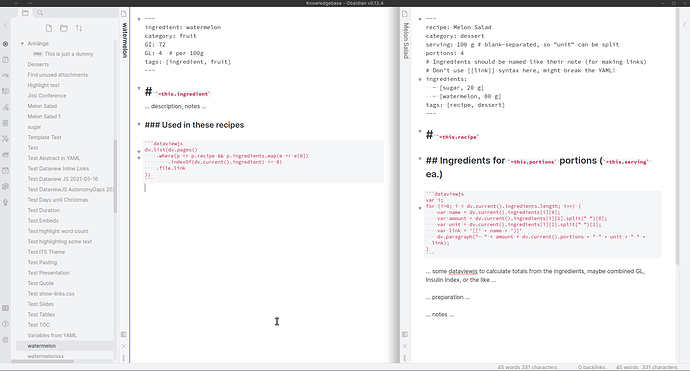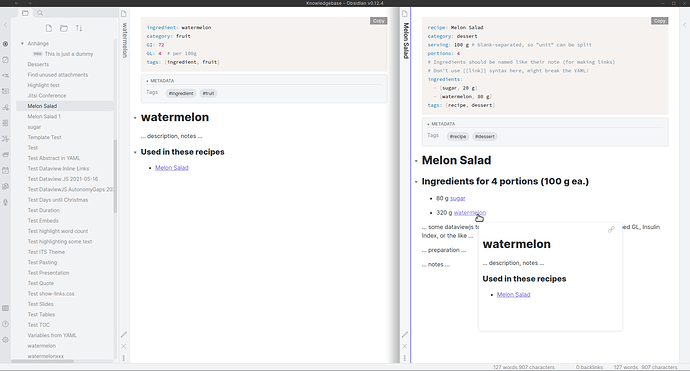For the ingredients, a “used in these recipes” could look like this:
---
ingredient: watermelon
category: fruit
GI: 72
GL: 4 # per 100g
tags: [ingredient, fruit]
---
# `=this.ingredient`
… description, notes …
### Used in these recipes
```dataviewjs
dv.list(dv.pages()
.where(p => p.recipe && p.ingredients.map(e => e[0])
.indexOf(dv.current().ingredient) >= 0)
.file.link
);
```
Now if that isn’t a reason to start loving YAML and Dataview …

